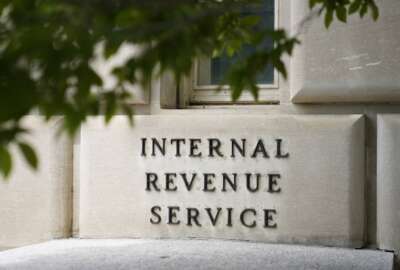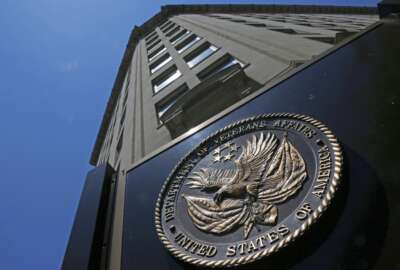Hubbard Radio Washington DC, LLC. All rights reserved. This website is not intended for users located within the European Economic Area.
DorobekInsider: The real story behind the Recovery.gov contract: The need for govt contracting transparency
There are some remarkable parts of the ongoing controversy about the Recovery.gov contract award — and most of them aren’t what most people have bee...
There are some remarkable parts of the ongoing controversy about the Recovery.gov contract award — and most of them aren’t what most people have been focusing on. It seems to me there is a much larger question then the specifics of the Recovery Board’s $9.5 million contract to Smartronix.
The red herrings:
* The price… Yes, $9.5 million — potentially $18 million if the options are exercised — is a lot of money, but in the end, this isn’t just a Web site. This is an enormous effort and, as Smartronix said in their statement, it is a lot more then just creating a Web site. It is a huge job that has to be done exceedingly quickly. And the Recovery Board did come on Federal News Radio 1500 AM’s Daily Debrief to explain what they are doing.
* The vendor… I don’t know Smartronix, the company that won the bid for the Recovery.gov redesign. As I said, the contractors — and the Recovery Board, for that matter — have a tough task ahead of them. In the end, I don’t think it is Smartronix responsibility to justify the cost of the contract. They submitted a bit — and the Recovery Board (through GSA) made the decision. It is the Recovery Board — and, apparently, GSA — to justify that decision, not the contractor. That being said, Smartronix officials have posted a statement about the Recovery.gov contract. Read that here. Given the unique nature of this contract — and what they are doing — it might be interesting if the Recovery Board and Smartronics do the work in a more transparent way. As I’ve said a number of times, the open government community is watching, and I believe they want to help. While some in that community are somewhat naive about what can be done, how quickly things need to be done, and government contracting, but… they do have good ideas. And some of them — I’d point to Jerry Brito, who created the Stimulus Watch Web site — some of them have real experience pulling this kind of data together. He has been there and done it. Neither the Recovery Board nor Smartronics have an exclusive on wisdom — and I think they’d be wise to tap into this eager group.
* Transparency… In the end, the Recovery Board will be transparent. After all, it is the organization’s middle name. In Federal News Radio’s interview with Earl Devaney, the chairman of the Recovery Board, he asked for patience — and that seems fair. They are working exceedingly hard to do a whole lot of things very quickly. To that end, I have been working with the Recovery Board to set a regular time when they come on Federal News Radio to update people on issues. I think that could go a long way to resolving some of the ongoing issues. The other issue is that transparency is a means to an end. The harsh truth is that people will focus on the results. When all is said and done, President Obama’s re-election will depend on the economy. The transparency of the stimulus package can ensure that money is being spent in the right way — and therefore, more jobs are being created. But transparency is a means to an end. It isn’t the end itself.
There are some lingering issues.
The most immediate issue: GSA needs to speak out about the contract. I have tentatively scheduled David Drabkin, GSA’s acting chief procurement officer, for Federal News Radio 1500 AM’s Daily Debrief on Friday. I hear that Drapkin himself managed the evaluation team. Drapkin is a very smart person who is exceedingly knowledgable about government procurement, so… I look forward to talking to him.
But there are other issues that really rise above this contract itself… there are some real issues that need solutions, debate and further examination:
* Task order transparency… Those of us who have covered government contracting for awhile have long known there are gaping holes in the transparency of government contracts. Robert Burton, the former OFPP deputy administrator who is now with the Venable law firm, was on Federal News Radio 1500 AM’s Daily Debrief with Chris Dorobek and Amy Morris… and he told us that 50 percent of cgovernment contracts are going through task orders. For example, while the vendors on multiple-award contracts are public, the task orders under those contracts are, as a rule, not made public. Even worse, the awards for those task orders are not made public. Somewhat surprisingly, the Homeland Security Department had an entire section of its Web site dedicated to contracts — it’s right on the DHS home page under the heading, “Open for Business.” But in general, there is no listing of task orders available under multiple-award contracts, including governmentwide acquisition contracts such as the Alliant contract used for the Recovery.gov award. There is also no list of awards made under those contracts. The most obvious issue are the agency statements of work. Making that information public would go a long way to describing what an agency is looking for… and might enable partnerships that we don’t imagine right now.
* Making contracts available… This is a much more thorny issue because most contracts have provisions that are sensitive — they contain proprietary information that many vendors don’t want made public. That being said, there are significant portions of contracts that can be made public but are not because… well, because they never were.
* Bidders… This would be more controversial, but I don’t understand why information such as number of bidders — and maybe even who those bidders were — could not be made available. I welcome other thoughts on this, but… this seems like valuable data in understanding how viable the contract was in the market. For example, Federal News Radio’s Jason Miller has confirmed that there were only three bidders for the Recovery.gov contract — out of the 59 Alliant vendors. That tells us something — or at least guides further questions. Maybe the contract was just too complex… or maybe most vendors didn’t see it as viable… or maybe they didn’t see a way that they could make money on it — or maybe there aren’t the right mix of vendors on the Alliant contract for a task of this kind… But the data helps all of us discuss the issues in a more informed way.
You can hear our converation with Venable’s Robert Burton here:
We have been focusing on the Recovery Board contract because, in part, I think there are lessons that can be learned here. And I think it is good when there is a broader discussion of government contracting.
I’d point this this post on Sunlight Lab’s e-mail listserve, where there has been some fascinating conversations, like this one:
OK, back off on the RATB, that makes sense, but don’t back off on the acquisition process used to award the work. The majority of government IT business is locked up in these huge GWACs that stifle innovation. Companies win a spot on them by being big, understanding obtuse details of the FAR, and knowing how to work the system. The result is gold-plated software/services that take forever to deliver and may not meet any user needs when delivered. This is why a software project that should cost $100K usually costs the government $1M.
Talk to federal acquisition people about whether they can even do an apps-for-democracy-like competition and then use the apps. The process is set up to buy an aircraft or build a dam, and some would says its not very good at that either.
Open up the GWACs or develop alternatives, this would be true acquisition reform.
I highlight this one because I think it is important to realize what people think about government contracting.
And… I think he is right to this degree: There needs to be more transparency in the government contracting process — particularly in the multiple-award contracts. But… I welcome other thoughts.
We have been covering the Recovery Board contract, in part because it is an interesting test case. This issue is continuing to evolve, but my sense is that the Recovery Board has an opportunity to provide an example of some new ways of incorporating transparency into government contracting.
Copyright © 2024 Federal News Network. All rights reserved. This website is not intended for users located within the European Economic Area.




